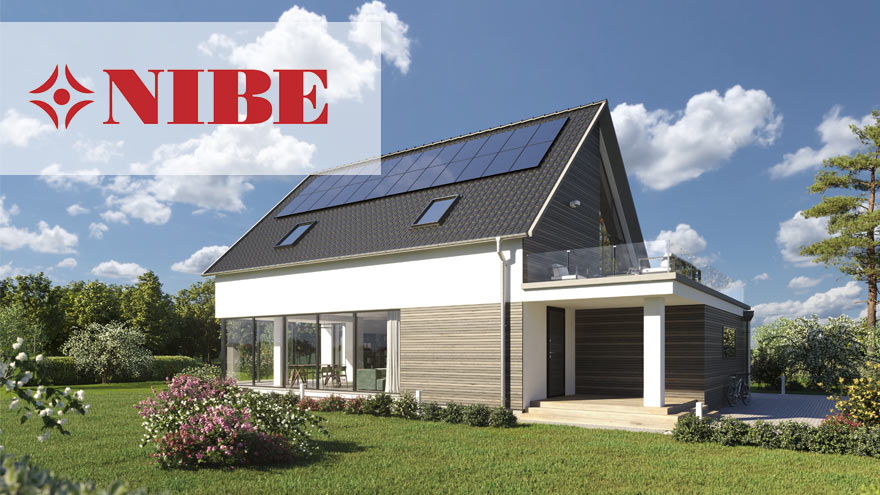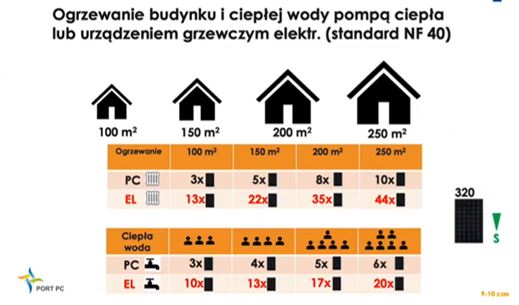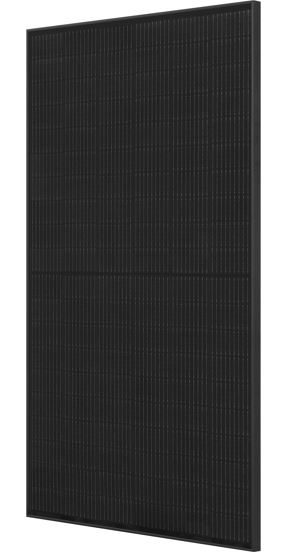The popularity of heat pumps and photovoltaic systems is growing rapidly. One of the reasons are very favorable subsidy programs (e.g. Clean Air, Moje Prąd or Swedish Grant ), which offer financial support for the purchase and installation of renewable energy devices, with the highest subsidy amounts allocated to systems combining heat pumps and photovoltaic panels. Why?

The heat pump mainly uses renewable energy sources. Only 20-25% of electricity is needed to drive the compressor and other automation elements. Therefore, it can be assumed that in the case of a heat pump, for each 1 kWh of energy taken from the network, approximately 4 kWh of thermal energy is transferred to the building. That is why it is often said that heat pumps operate with an efficiency of 400 or even 500%.
In the case of classic electric heating devices, such as heating mats, infrared heaters, electric boilers, electric hot water heaters, etc., electrical energy taken from the network is converted into thermal energy in a 1:1 ratio. Consequently, to supply the same amount of energy to the building or heat the same amount of domestic hot water, these devices consume approximately four times more electricity than a heat pump.
Case study
To show the advantage of heat pumps over other electrical devices, it is worth analyzing an example of a single-family building with an area of 150 m 2 , built to the NF 40 standard (heat demand 40 kWh/m 2 /year), inhabited by a family of four, whose average daily consumption DHW is 50l/person. The annual demand for thermal energy needed to ensure thermal comfort in this building is 6,000 kWh/year, and the annual demand for thermal energy needed to heat 200 liters of hot water every day is 3,387 kWh/year.

Selection of the size of a photovoltaic installation for an electric source heating device ; PC PORT
To cover the electricity demand of a heat pump operating for central heating and domestic hot water purposes, we need a photovoltaic installation with a capacity of approximately 2.88 kW, i.e. 9 panels with a capacity of 320 Wp. Assuming the average price for a comprehensive photovoltaic installation at PLN 4,500 per 1 kW of installation power, the cost of the installation will be approximately PLN 12,960.
In the same building with a different electric heating device, we would need a photovoltaic installation with a capacity of 11.2 kW, i.e. as many as 35 panels, to cover the energy demand. Therefore, the cost of such an installation would be over PLN 50,000.
Both in the case of heating and preparation of hot water on the roof of a single-family building, there is usually simply not enough space to install a large photovoltaic installation to power heating mats or an electric boiler. The required power of the photovoltaic system in such a configuration would exceed 10 kWp and would be less profitable from the point of view of energy balancing. Therefore, the use of a heat pump that can heat, cool and heat domestic hot water is currently the most optimal solution, both in new and existing buildings.
Intelligent NIBE system for homes without bills
 New NIBE PV photovoltaic systems for the production of electricity from a renewable energy source, i.e. solar radiation, have been added to the NIBE offer. The panels are available in sets with a power of 3.2; 6.4; 9.6; 12.8; 16 and 22.4 kW, which allows adaptation to the needs or installation possibilities. If you want to achieve maximum savings through the use of photovoltaic panels, it is worth investing in a heat pump, increasing your own consumption of electricity, which the energy company will balance with the energy produced from the sun. In addition, NIBE PVI inverters contain an EME communication module, which enables communication with the NIBE heat pump, increasing its efficiency during the current production of electricity from the sun.
New NIBE PV photovoltaic systems for the production of electricity from a renewable energy source, i.e. solar radiation, have been added to the NIBE offer. The panels are available in sets with a power of 3.2; 6.4; 9.6; 12.8; 16 and 22.4 kW, which allows adaptation to the needs or installation possibilities. If you want to achieve maximum savings through the use of photovoltaic panels, it is worth investing in a heat pump, increasing your own consumption of electricity, which the energy company will balance with the energy produced from the sun. In addition, NIBE PVI inverters contain an EME communication module, which enables communication with the NIBE heat pump, increasing its efficiency during the current production of electricity from the sun.
NIBE PV combined with a heat pump and a NIBE recuperator create an intelligent and multi-tasking system thanks to which we obtain full comfort of staying at home without energy bills, and the entire NIBE system can be remotely monitored via the Internet using NIBE Uplink.
Check out the detailed information and the full NIBE offer .